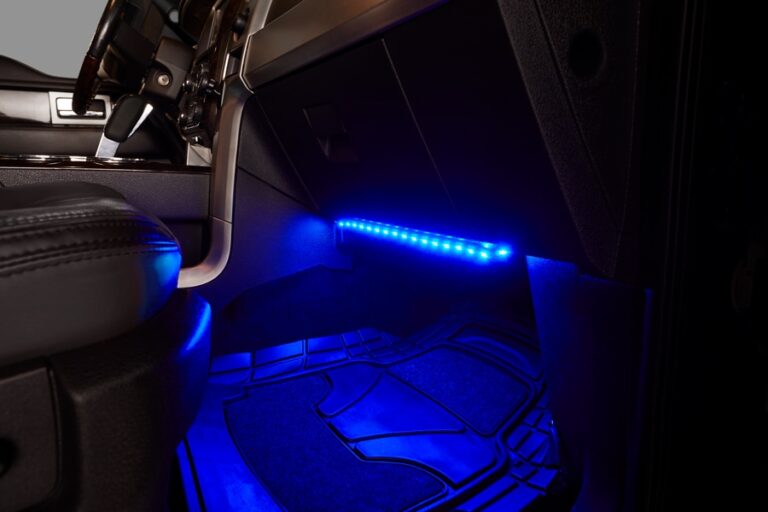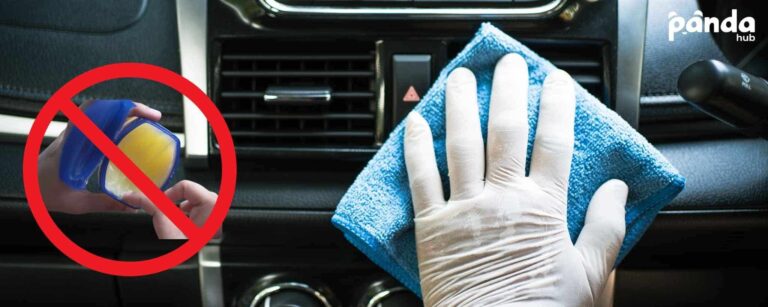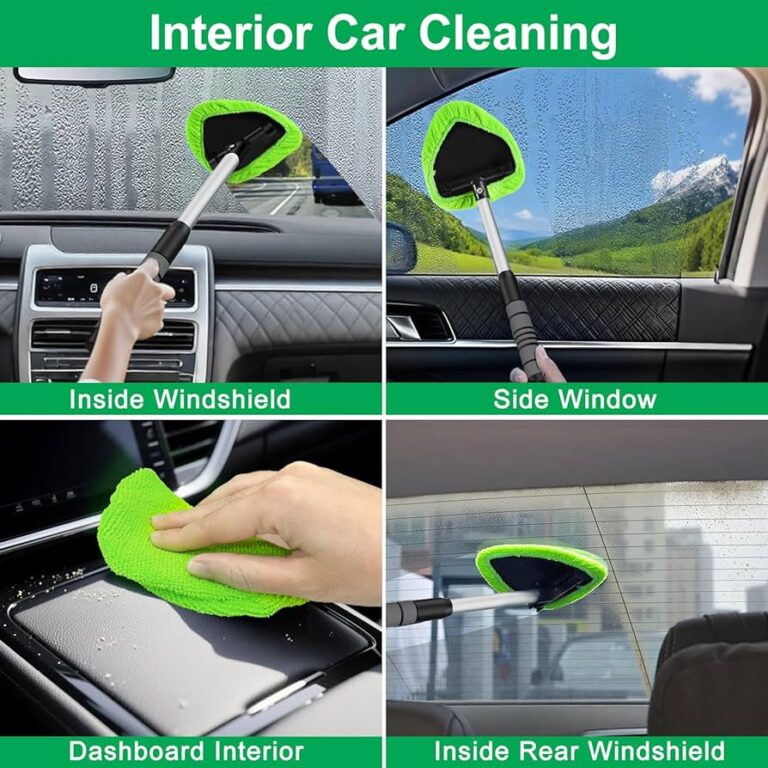I can’t tell you how many times I’ve stepped into a customer’s car and the first thing that hit me wasn’t a bad brake pad squeal or a whining power steering pump—it was the smell from the carpet. Most drivers don’t think twice about it, but dirty carpets can be just as frustrating as a worn-out spare part. They affect how comfortable your ride feels, they trap moisture that can lead to rust underneath, and let’s be honest, no one enjoys driving around in a car that smells like last week’s fast food.
That’s why I often get asked: “How to Clean Car Carpet with Baking Soda?” I’ve learned that keeping the interior clean isn’t just about looks—it’s about protecting your investment, keeping the air inside your car fresh, and saving money on expensive detailing jobs. I’ve used baking soda countless times in my own garage, and it’s one of those simple, reliable fixes that actually works if you do it right.

Image by amazingcarsanddrives
What Is Car Carpet and What Does It Do?
Car carpet, or what we mechanics often call the floor covering or interior carpet, is that plush (or sometimes not-so-plush) material lining the floor of your vehicle. It’s not just there for show – it’s a functional layer that absorbs noise, provides insulation against heat and cold, and gives your feet a comfortable surface to rest on during those cross-country hauls. In most American-made cars like Fords or Chevys, it’s typically a blend of nylon or polyester fibers backed with foam or rubber to handle moisture and wear.
From my experience, the carpet acts as a first line of defense against dirt tracked in from boots, spills from coffee runs, or even leaks from rainy days. I’ve pulled apart interiors on older models like a ’90s Jeep Cherokee where the carpet had molded from water intrusion, turning the whole cabin into a health hazard. It matters for safety too – a clean, grippy carpet prevents slips when you’re reaching for something under the seat.
Performance-wise, it doesn’t directly affect your engine, but a well-maintained interior keeps the overall vehicle reliable by preventing rust under the floor pans from trapped moisture. Cost-wise, ignoring it can lead to expensive replacements down the line, especially in high-humidity areas like Florida or the Pacific Northwest.
Common Problems with Car Carpet: Stains, Odors, and Wear
Over the years, I’ve seen car carpets take a beating in ways that surprise even seasoned drivers. Stains are the big one – think coffee spills, mud from hiking boots, or oil from that leaky takeout bag. These don’t just look bad; they can seep into the fibers and cause permanent discoloration if not addressed quickly. In my shop, I’ve had customers bring in vehicles where pet accidents left yellow spots that turned brittle over time.
Odors are another nightmare. Baking soda is my go-to because it neutralizes smells without masking them like those pine tree air fresheners. Common culprits? Mildew from wet carpets in rainy Seattle winters or cigarette smoke embedded in older Cadillacs I’ve restored. Wear and tear shows up as fraying edges near the pedals or thinning spots under the driver’s heel – signs of failure that scream “neglect” when you’re selling the car.
I’ve got a story: Once, a buddy brought his Toyota Tacoma to me after a fishing trip gone wrong. Fish guts had leaked onto the carpet, creating a stench that made your eyes water. We caught it early, but ignoring it could’ve led to bacterial growth, affecting air quality and even triggering allergies. Signs like musty smells, visible mold, or sticky residues mean it’s time to act before it escalates to full replacement.
When and Why You Need to Clean or Replace Your Car Carpet
Knowing when to clean versus replace comes from hands-on trial and error. Clean if the issues are surface-level – fresh stains, light odors, or general dirt buildup. In my experience, if you’ve got a family hauler like a Honda Odyssey, regular cleaning every few months prevents buildup from kids’ snacks and prevents costly deterioration.
Replacement? That’s when cleaning won’t cut it. If the carpet’s torn, water-damaged with rust underneath, or so worn it’s exposing the metal floor, you’re looking at a swap. Why bother? Safety first – deteriorated carpet can bunch up under pedals, causing acceleration issues. Performance dips if moisture rots the underbody, leading to structural weakness. Cost? A DIY clean with baking soda runs under $10, but replacement can hit $200-$500 for parts alone, plus labor if you’re not handy.
I’ve replaced carpets in flood-damaged cars from Texas storms, and it’s always because owners delayed cleaning. Fuel efficiency isn’t directly tied, but a lighter, cleaner interior means less weight from caked dirt – every bit helps on long trips. Reliability shines when you maintain it; a fresh carpet keeps your cabin hygienic, especially in dusty Arizona deserts where sand grinds fibers down.
Step-by-Step Guide: How to Clean Car Carpet with Baking Soda
Alright, let’s get our hands dirty – figuratively, since this method is pretty clean. I’ve used this on everything from luxury Lexuses to beat-up work trucks, and it works wonders for deodorizing and lifting grime without harsh scrubbers that could fray fibers.
First, gather your tools: A vacuum (shop vac if possible), baking soda (Arm & Hammer is my staple, available at any Walmart), a stiff brush, white vinegar (optional for tough stains), and a spray bottle. Safety tip: Work in a well-ventilated garage to avoid inhaling dust, and wear gloves if you’ve got sensitive skin.
Step 1: Prep the area. Remove floor mats and any loose items. Vacuum thoroughly to suck up debris – I always hit the crevices under seats where crumbs hide.
Step 2: Sprinkle liberally. Shake baking soda over the entire carpet, focusing on stained or smelly spots. Let it sit for at least 15-30 minutes; overnight for bad odors. Why? It absorbs moisture and neutralizes acids causing smells.
Step 3: Agitate. Use a brush to work it in gently – no need to scrub hard, as that can damage loops in Berber-style carpets common in GMs.
Step 4: Vacuum again. Suck up all the powder. For extra punch, mix equal parts water and vinegar in a spray bottle, mist lightly, and blot with a microfiber cloth. Dry completely with fans or open doors.
Common mistake? Rushing the drying – I’ve seen folks drive off wet, leading to mildew. Pro tip: In humid climates like the Southeast, use a dehumidifier. This whole process takes 1-2 hours, and I’ve done it on a ’15 Ford F-150 where soda spills had turned sticky; post-clean, it smelled brand new.
Alternatives to Baking Soda for Cleaning Car Carpet
Baking soda’s great, but sometimes you need backups. I’ve tried commercial cleaners like Armor All Carpet & Upholstery Cleaner on stubborn grease in mechanics’ vans – it’s foam-based and lifts oil well, but costs more at around $8 a can from AutoZone.
Steam cleaning is another fave for deep cleans; rent a machine from Home Depot for $30 a day. It kills bacteria without chemicals, ideal for allergy sufferers. Drawback? It wets the carpet, so drying is crucial.
For eco-friendly options, club soda works on fresh spills – pour, blot, done. But for odors, nothing beats baking soda’s absorption in my book. I’ve compared them side-by-side on a split-test in a wrecked Subaru: Baking soda won for cost and simplicity.
OEM vs Aftermarket Car Carpet Options: Which to Choose?
If cleaning isn’t enough and you’re replacing, let’s talk options. OEM (Original Equipment Manufacturer) carpets come from the maker – think Ford Genuine Parts for your Explorer. They’re exact fits, matching color and texture, but pricey: $300+ from dealerships like those in Detroit.
Aftermarket? Brands like Auto Custom Carpets or ACC offer molded replacements for $150-$250, available on Amazon or RockAuto. They’re often thicker for better insulation, but check compatibility – I’ve installed ones on Chevys that needed trimming.
Pros of OEM: Perfect fit, warranty-backed reliability. Cons: Higher cost, limited styles.
Aftermarket pros: Affordable, customizable (e.g., waterproof backing for off-roaders). Cons: Potential quality variance; I’ve seen cheap ones fade quickly in sunny California.
| Feature | OEM Car Carpet | Aftermarket Car Carpet |
|---|---|---|
| Price Range (US Market) | $250-$500 | $100-$300 |
| Fit Quality | Exact match | Good, may need minor adjustments |
| Durability | High, factory-spec | Varies by brand (e.g., ACC is solid) |
| Availability | Dealerships, online OEM sites | Amazon, AutoZone, RockAuto |
| Warranty | Often 1-2 years | Brand-dependent, 6 months to lifetime |
| Best For | Stock restorations | Budget upgrades, custom looks |
From experience, for daily drivers like a Honda Civic, aftermarket saves money without sacrificing much. But for classics, OEM preserves value.
How to Identify Genuine vs Fake Car Carpet Parts
Fakes flood the market, especially online. Genuine OEM has holograms or stamps – check Ford’s blue oval logo on packaging. Aftermarket legit brands like Lloyd Mats use quality stitching; fakes feel thin and smell chemical-y.
I’ve been burned once buying “OEM” for a Dodge Ram on eBay – it didn’t fit right, edges frayed fast. Tip: Buy from trusted US sellers like O’Reilly Auto Parts. Scan QR codes if available; fakes often lead nowhere. For compatibility, cross-reference with your VIN at sites like the manufacturer’s portal.
Installation Tips for Replacing Car Carpet: Hands-On Insights
Replacing carpet? It’s a weekend job I’ve done dozens of times. Start by removing seats and console – unbolt with a socket set (3/8-inch drive works for most domestics). Peel out the old, scrape adhesive residue with a putty knife.
Lay the new: Trim if needed, apply spray adhesive (3M Super 77 is my pick, $15 at hardware stores). Reinstall everything, ensuring no bunches under pedals.
Common mistakes: Not disconnecting battery first (safety for airbags), or skipping sound deadening foam underneath – that amps up road noise. Anecdote: On a ’08 Chevy Silverado, I forgot to align the seat tracks; had to redo it, wasting hours. Pro tip: Label bolts with tape for easy reassembly.
Maintenance post-install: Vacuum weekly, use mats, and spot-clean spills immediately. In snowy states like Minnesota, salt-proof with Scotchgard spray.
Tools and Safety Best Practices for Carpet Work
Tools: Shop vac ($50 at Harbor Freight), brushes, adhesive remover. For replacement: Trim tools, heat gun for molding.
Safety: Gloves, knee pads (carpets hide sharp edges), and eye protection for dust. Work grounded – no jewelry near batteries. In my garage, I always have a fire extinguisher handy, especially with adhesives.
Best practice: Test cleaners on hidden spots first. For kids or pets, opt for non-toxic like baking soda to avoid fumes.
Personal Anecdotes from the Garage: Real Fixes and Customer Tales
Back in my early days apprenticing in a Chicago shop, a customer rolled in with a Mercedes-Benz reeking of spilled milk. We tried everything, but baking soda overnight did the trick – saved him from a $1,000 interior job. Common question: “Will it damage my heated floors?” Nope, it’s gentle.
Another time, restoring a ’70s Camaro, the carpet was moth-eaten. Replaced with aftermarket, added custom embroidery – turned a beater into a showpiece. Customers often ask about pet odors; I tell ’em, baking soda plus enzyme cleaners for urine.
These experiences taught me: Prevention beats cure. Regular cleans keep small issues from becoming big bills.
Conclusion: Making Smarter Decisions for Your Car’s Interior
Wrapping this up, keeping your car carpet clean with baking soda is a game-changer for any driver – it’s affordable, effective, and extends the life of your interior. Whether you’re tackling stains in your commuter or prepping a project car, remember: Assess the damage early, choose quality options if replacing, and always prioritize safety in the garage. By opting for OEM for precision or aftermarket for savings, you’ll make decisions that boost reliability and value.
Mix baking soda with essential oils like lavender for a custom freshener effect – I’ve used it in my own Wrangler, and it beats store-bought every time. Drive safe, and keep those floors spotless!
FAQ: Common Questions About Cleaning and Maintaining Car Carpet
How often should I clean my car carpet with baking soda?
Aim for every 3-6 months, or sooner if you notice odors or stains. In high-traffic vehicles like family minivans, monthly touch-ups prevent buildup – I’ve advised truckers to do it bi-weekly for heavy use.
Can baking soda remove tough oil stains from car carpet?
Yes, but pair it with dish soap for grease. Sprinkle, add a dab of Dawn, agitate, and vacuum. Worked like a charm on a mechanic’s van I fixed last year.
What’s the best way to dry car carpet after cleaning?
Air dry with fans or open doors for 24 hours. Avoid driving wet to prevent mold – in one case, a rushed job led to re-cleaning a whole SUV.
Are there any cars where baking soda cleaning doesn’t work well?
It shines on most fabrics, but test on leather-trimmed edges in luxury rides like Audis. For vinyl floors in some work trucks, skip it and use mild soap instead.
How do I prevent odors from returning after cleaning car carpet?
Use protective mats, vacuum regularly, and address leaks promptly. Adding a charcoal bag under seats absorbs lingering smells – a trick I’ve shared with off-road enthusiasts.



